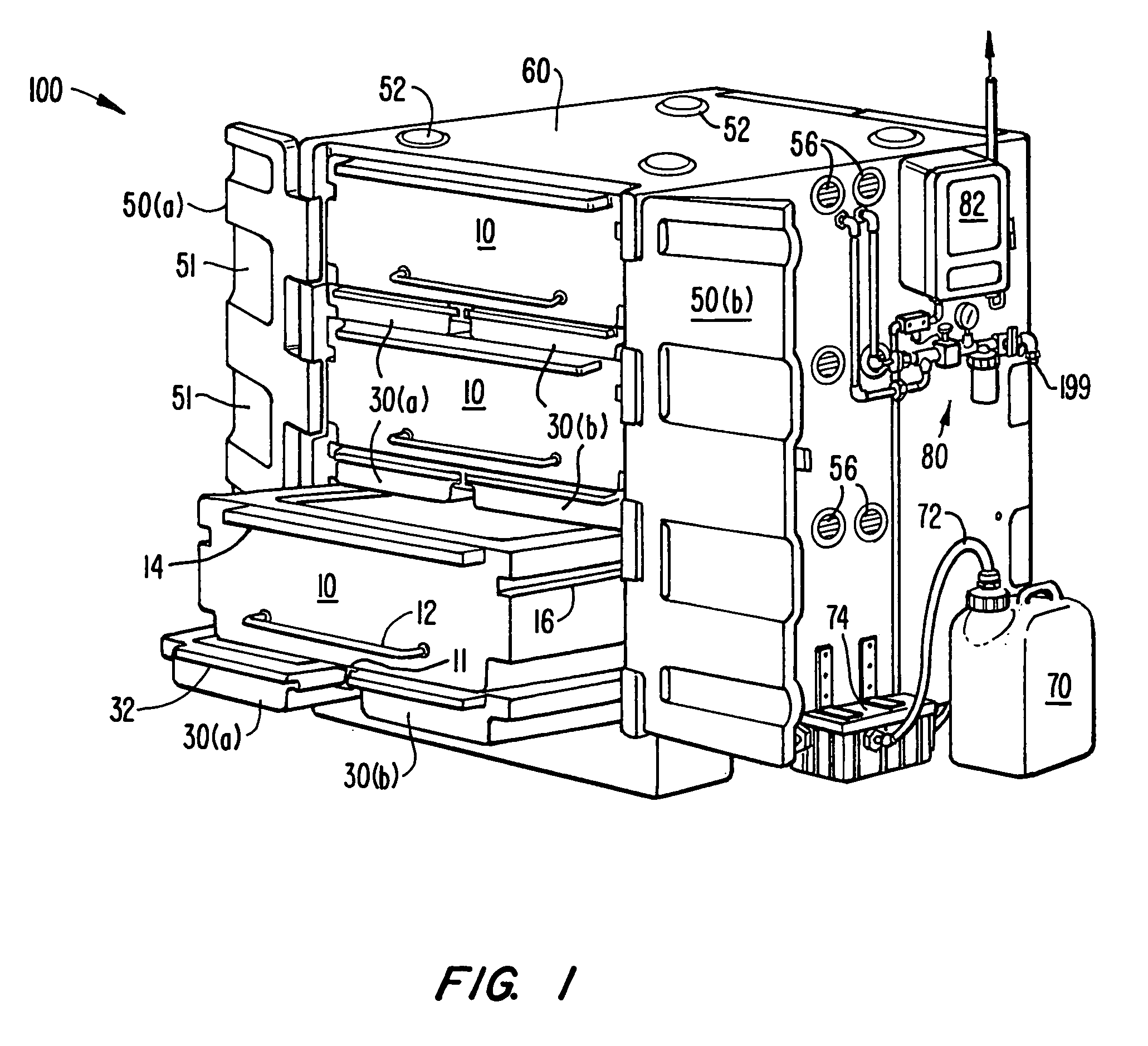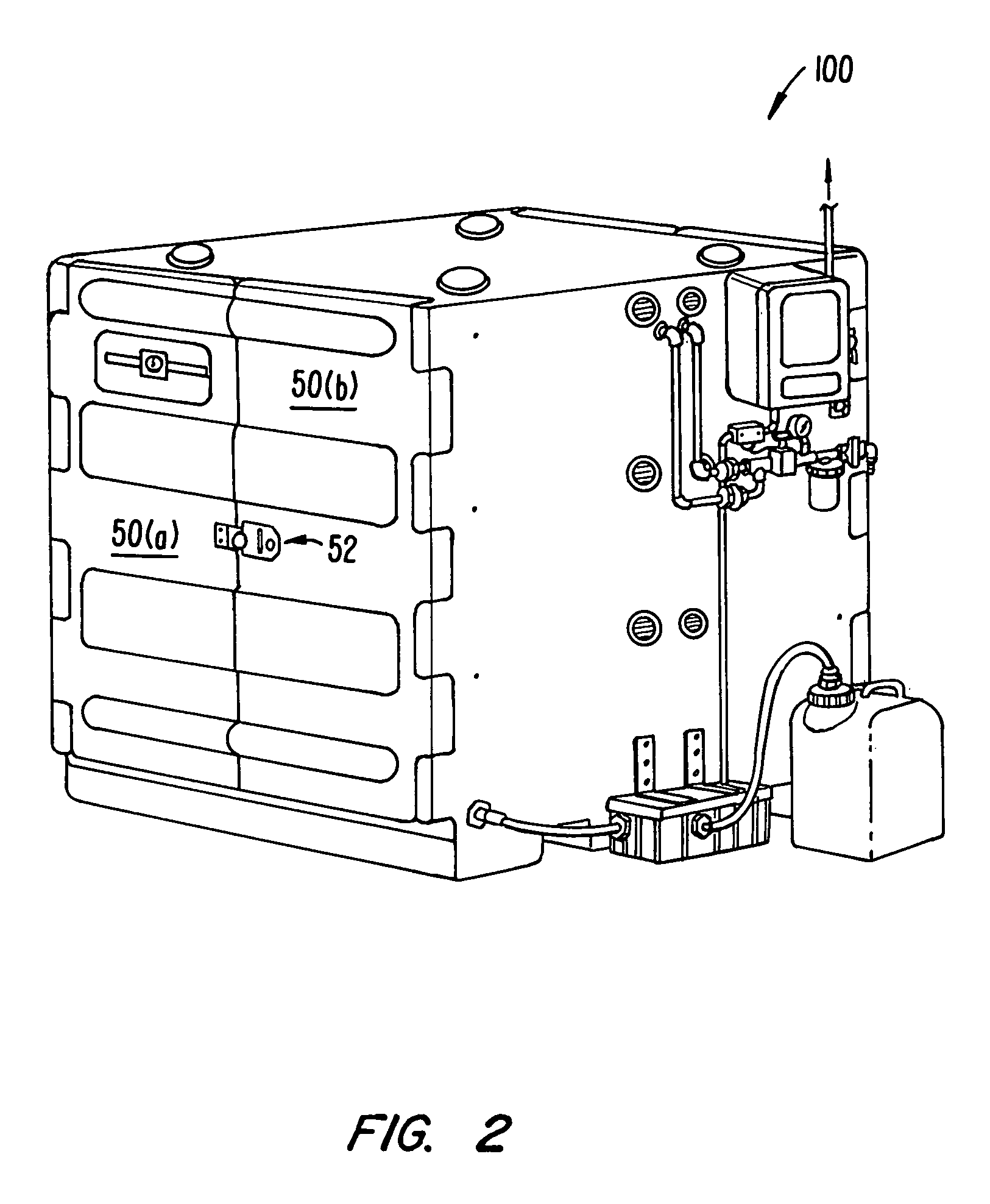Composting apparatus and method
a technology of composting apparatus and equipment, applied in the field of composting apparatus and method, can solve the problems of large-scale composting apparatus occupying large space, complicated machinery, laborious,
- Summary
- Abstract
- Description
- Claims
- Application Information
AI Technical Summary
Benefits of technology
Problems solved by technology
Method used
Image
Examples
Embodiment Construction
[0026]Embodiments of the invention can be used at any suitable facility. For example, embodiments of the invention could be used in schools, grocery stores, day care centers, restaurants, zoos, jails, military bases, hospitals, cafeterias, farms, and multi-family housing units. Embodiments of the invention can be designed to process substantially all of the organic waste produced by a facility while occupying minimal space at the facility. Large amounts of high quality organic product can be produced at the facility using embodiments of the invention. The organic product can be used at the facility or could be used elsewhere.
[0027]Any suitable compostable material can be composted in embodiments of the invention. Examples compostable material include organic waste such as pre and post consumer food waste, low grade paper waste, food contaminated paper waste, agricultural waste including manure and crop residuals, municipal biosolids, and industrial organic sludge.
[0028]A typical com...
PUM
| Property | Measurement | Unit |
|---|---|---|
| diameter | aaaaa | aaaaa |
| width | aaaaa | aaaaa |
| depth | aaaaa | aaaaa |
Abstract
Description
Claims
Application Information
 Login to View More
Login to View More - R&D
- Intellectual Property
- Life Sciences
- Materials
- Tech Scout
- Unparalleled Data Quality
- Higher Quality Content
- 60% Fewer Hallucinations
Browse by: Latest US Patents, China's latest patents, Technical Efficacy Thesaurus, Application Domain, Technology Topic, Popular Technical Reports.
© 2025 PatSnap. All rights reserved.Legal|Privacy policy|Modern Slavery Act Transparency Statement|Sitemap|About US| Contact US: help@patsnap.com



